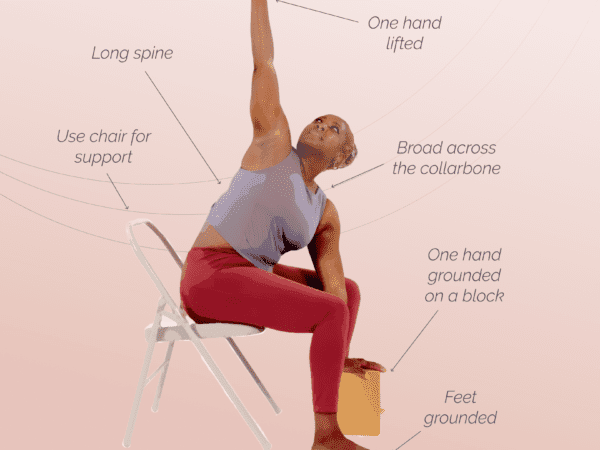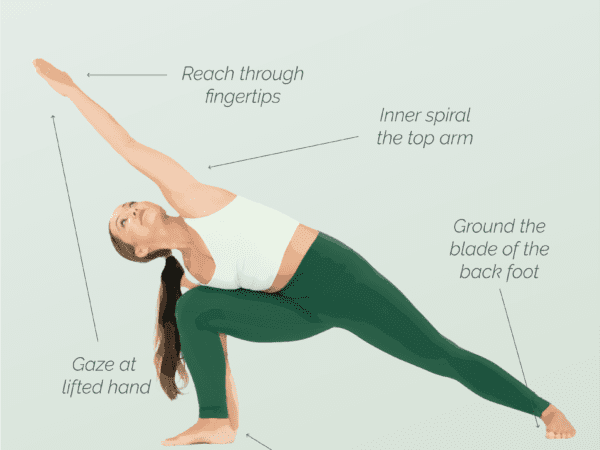In the realm of yoga, practitioners continually seek poses that enhance flexibility, strength, and mental clarity. One such pose, modified prasarita padottanasana, offers an intense and unique blend of these benefits, making it a valuable addition to any yoga routine, much like the headstand, and it opens the chest effectively. This modified version of the traditional wide-legged forward bend is accessible to individuals of varying skill levels, providing an opportunity to experience the variations and profound effects of this pose without the need for advanced flexibility. By incorporating modified yoga poses like modified prasarita padottanasana into their practice, individuals can unlock new dimensions of physical and mental well-being, experiencing the myriad yoga benefits that pave the way for a more balanced and harmonious life.
Benefits of Modified Prasarita Padottanasana
Enhanced Flexibility: This pose gently stretches the hamstrings, calves, hips, and lower back, promoting greater flexibility and reducing muscle stiffness.
Improved Balance: By engaging the core and stabilizing muscles, practitioners can enhance their balance and coordination, which is essential for overall physical stability.
Stress Relief: The forward bend in modified prasarita padottanasana encourages relaxation and stress relief, helping to calm the mind and reduce anxiety.
Better Circulation: The inversion aspect of this pose aids in improving blood circulation, which can invigorate the body and support cardiovascular health.
Strengthened Muscles: This pose engages various muscle groups, including the legs, core, and back, contributing to overall muscle strength and endurance.
Enhanced Focus: Practicing this pose requires concentration and mindfulness, which can enhance mental clarity and focus, benefiting both yoga practice and daily life.
Spinal Health: The gentle stretch and elongation of the spine in this pose can help alleviate tension and improve spinal alignment, promoting better posture and spinal health.
Contraindications for Modified Prasarita Padottanasana
Lower Back Injuries: Individuals with existing lower back injuries or chronic pain should avoid this pose or practice it under the guidance of a qualified instructor to prevent exacerbating their condition.
High Blood Pressure: Due to the inversion aspect of this pose, those with high blood pressure should exercise caution and consult with a healthcare professional before attempting it.
Glaucoma: The increased pressure on the eyes during the forward bend can be harmful to individuals with glaucoma, making this pose unsuitable for them.
Recent Surgery: Anyone who has recently undergone surgery, particularly in the abdominal or spinal regions, should refrain from practicing this pose until fully healed and cleared by a medical professional.
Pregnancy: Pregnant individuals should avoid deep forward bends, including modified prasarita padottanasana, to prevent undue pressure on the abdomen and lower back.
Neck Issues: Those with neck problems should be cautious, as the forward bend can strain the neck. Modifications or alternative poses may be necessary.
Balance Disorders: Individuals with balance disorders or vertigo should avoid this pose to prevent the risk of falling or dizziness.
How to Do Modified Prasarita Padottanasana Step-by-Step
Preparation:
Begin by standing in tadasana (mountain pose) with your feet hip-width apart, ensuring your hips are aligned and balanced.
Take a deep breath and center your mind, preparing for the pose.
Positioning the Feet:
Step your feet wide apart, about 3 to 4 feet, ensuring they are parallel to each other and aligned with your hips.
Distribute your weight evenly across both feet.
Engaging the Core:
Engage your core muscles to support your lower back.
Lengthen your spine by lifting through the crown of your head.
Inhaling and Lifting:
Inhale deeply, raising your arms out to the sides and up overhead.
Stretch your arms and fingers towards the ceiling, creating space in your torso.
Forward Bend:
Exhale slowly as you hinge at the hips, keeping your spine long and straight.
Lower your torso towards the floor, hinging at the hips, and bring your hands to rest on the floor or your shins, depending on your flexibility. Rest your head on two yoga blocks stacked on top of each other.
Adjusting the Pose:
Ensure your head is in line with your spine, avoiding any strain on your neck.
If needed, bend your knees slightly to maintain a comfortable stretch in your hamstrings and lower back.
Holding the Pose:
Hold the pose for several intense breaths, allowing your body to relax into the stretch.
Focus on deep, even breathing to enhance the calming effects of the pose.
Coming Out of the Pose:
To exit, engage your core and slowly lift your torso back up to a standing position.
Bring your feet together and return to tadasana, taking a moment to observe the effects of the pose on your body and mind.
By following these steps, practitioners can safely and effectively perform the modified yoga asana, Modified prasarita padottanasana, reaping its numerous physical and mental yoga benefits, while allowing for variations to suit individual needs.
Additional Tips for Practicing Modified Prasarita Padottanasana
Use Props:
Incorporate yoga blocks or a bolster under your hands to provide additional support and make the asana more accessible, especially if you have tight hamstrings or lower back issues.
Warm Up:
Ensure your body is adequately warmed up before attempting this pose. Gentle stretches and light cardio can help prepare your muscles and joints.
Maintain Alignment:
Keep your feet parallel and your weight evenly distributed to avoid straining your knees or ankles. Engage your inner thighs to maintain stability.
Breathe Deeply:
Focus on deep, diaphragmatic breathing throughout the pose. This helps to relax your muscles and deepen the stretch.
Listen to Your Body:
Pay attention to your body’s signals. If you experience pain or discomfort, ease out of the pose and make necessary adjustments.
Gradual Progression:
Start with a shorter stance and gradually increase the distance between your feet and hips as your flexibility improves. Avoid forcing your body into a deeper stretch than it is ready for.
Engage the Core:
Keep your core muscles engaged to support your lower back and maintain proper alignment. This also helps to prevent collapsing into the pose.
Relax the Neck:
Ensure your neck is relaxed and in line with your spine. Avoid letting your head hang heavily, which can cause strain.
Practice Regularly:
Consistency is key to improving flexibility and strength. Incorporate modified prasarita padottanasana into your regular yoga practice for the best results.
Seek Guidance:
If you’re new to this pose or have specific health concerns, consider seeking guidance from a certified yoga instructor to ensure proper technique and modifications.
Are you looking for more guidance on your yoga journey? Sign up for Omstars to get access to thousands of yoga classes in the comfort of your own home. Click here to start your subscription.










